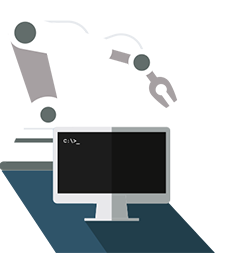New publication on Maintenance via remote access – IT-security aspects
Read more: https://www.safe-machines-at-work.org/control-devices
Read more
Collaborative industrial robots are complex machines which work hand in hand with human beings. In a shared work process, they support and relieve the human operator. To date, the use of robots has required guards in order to protect persons present in the robot's working space reliably against exposure to mechanical impact and therefore injury caused by parts of the robot moving at high speed.
Since, when collaborative robots are used, guards are no longer in place for certain working/collaboration spaces, other technical protective measures must be employed. These measures must continually identify and, through the robot's control system, minimize the collision risks.
From the perspective of occupational health and safety, it is important that the used protective devices react correctly and in time. All relevant external influences must be taken into account during validation. This applies in particular to industrial security aspects.
https://www.dguv.de/ifa/fachinfos/kollaborierende-roboter/index-2.jsp
The number of autonomously driving machines such as automated guided vehicles or service robots is increasing in (industrial) areas where pedestrians are also present. Due to this, the number of interactions between humans and machines is also increasing. In addition, these machines usually have wireless interfaces such as W-LAN or Bluetooth by which the machines can be addressed. These wireless connections must be protected against unauthorized access so that no attack can be carried out on a machine or a network.
https://www.suva.ch/fr-CH/materiel/fiche-thematique/vehicules-de-transport-autoguides-agv-suva